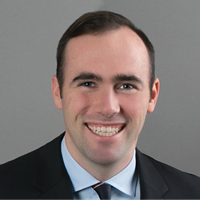Clinical
Opportunity Ahead: Community Health Systems and Clinical Trials
March 6, 2019
As TripleTree recently noted, there has been a tremendous amount of interest and investment in precision medicine as of late. As a result, the required number of clinical trials and need for enrolling patients has rapidly grown. However, as new drugs have become more targeted and complex, the specificity of eligible patients for clinical trials has also spiked. This has only exacerbated the challenges pharmaceutical companies face when bringing new drugs to market. Already, 37% of trials fail to meet enrollment targets, over 85% of trials are delayed, and hundreds of failed research sites cost sponsors ~$50,000 apiece. The promise of life-saving tailored treatments has increased the burden on already over-worked and under-resourced providers and their patients in navigating the complicated world of clinical trials. This paradox of increasing demand in a resource-constrained setting creates a unique opportunity for health systems, and specifically community health systems.
Community health systems have the earliest and strongest relationships with patients, for instance, Northwell sees 16,000 new oncology patients per year however, pharmaceutical researchers have traditionally looked to academic medical centers (“AMCs”) to find eligible patients for novel treatment options. Industry researchers have focused on AMCs (e.g., Memorial Sloan Kettering, Mayo Clinic, MD Anderson) because of their investments in clinical research personnel, technology, and infrastructure. Our recent conversations with leading community health system executives suggest they are now making similar clinical research investments with the goal of becoming preferred partners of pharmaceutical sponsors.
What’s in it for a community health system?
- Better meet the needs of their patients. If a hospital doesn’t offer the full-range of treatments, including clinical trials as part of the routine healthcare provision, a patient is forced to evaluate transferring their care to a provider that has access to those treatments. This not only causes patient and provider frustration, but also has a significant impact on direct and downstream revenue for a health system. Patients believe the patient-provider relationship is the “single-most important hallmark of quality care” – and the level of trust that is built over the years is crucial when evaluating alternative treatments like clinical trials.
- Increased revenue opportunities: As a destination for clinical trials, community health systems can attract new patients that may have otherwise opted to enroll in a trial sponsored by an AMC. Additionally, and potentially more importantly, providers that offer a more comprehensive range of treatments are also more likely to retain current patients if they are looking to enroll in a clinical trial. Both can be a significant source of fee for service revenue.
- Intrinsic rewards: Medical professionals, pharma researchers, and hospital executives often top career surveys for employee satisfaction because they are rewarded with directly improving the health of patients. These professions not only help improve the quality of life, but often save lives. These high levels of career satisfaction can also curb costly physician and nurse turnover. Additionally, in an increasingly competitive landscape for health systems and hospitals, advancing medical knowledge and driving clinical innovation are key drivers for attracting new patients and the most talented medical professionals; as well as advancing the regional and national prestige of a system.
- New funding sources: Clinical research is often one of the leading drivers of philanthropic support (e.g., A Nonprofit’s Role in Medical Research) and federal funding (e.g., the NIH is estimated to dedicate ~$16B to clinical research and clinical trials support in 2019).
In support of this growing opportunity, we have also observed recent investment trends and market innovations that help address some of the potential challenges associated with increased clinical trials at community health systems:
- Provider identification of patients. The traditional method of clinical trial patient identification requires a physician or nurse to be aware of a clinical trial protocol and then think about potential patients. Subsequently, they must read through the unstructured narrative data in each patient’s record and cross-reference a growing number of eligibility criteria for a trial. This cumbersome process often takes weeks or months and often results in far fewer identified patients than required by the trial sponsor. Clinithink has developed a software platform (utilized by pharma researchers) that helps health systems take eligibility criteria and scan the medical institution’s EHR. The tool replaces the manual review and identifies patients eligible for a trial – all in a matter of minutes. Utilizing this tool, providers avoid spending time on trials that fall short of goals and can instead focus on trials with high confidence of meeting enrollment targets. TT Capital Partners (TTCP) is an investor in Clinithink.
- Patient identification of clinical trials. Increasingly, patients are also trying to find clinical trials on their own. A survey completed by SubjectWell found that while 94% of respondents had a neutral or better (i.e., somewhat or very positive) perception of clinical trials, half were not aware of clinical trials and only 4% had ever participated. To identify patients outside of an EHR database, one might consider a tool like SubjectWell, which provides access to a marketplace of patients seeking clinical trials. Other companies include Antidote, PatientsLikeMe, and Studykik, backed by Merck Global Health Innovation fund, iCarbonX, and Kinderhook, respectively.
- Patient enrollment/management. Once eligible patients are identified, there is an administrative process for contacting and enrolling patients. Trialbee’s platform provides patient recruitment and retention tools that identify and target relevant patients, pre-qualify online and over the phone, and interact with patients through recruitment and into the clinical trial phase. Constant interaction increases buy-in and the likelihood of a patient being enrolled and staying in the trial. Put simply, the patient knows best, and successful systems are able to internalize feedback and respond accordingly.
- Principal investigators (“PI”) engagement. A health system also needs to find a physician to help the patient navigate the clinical trial treatment and fulfill reporting requirements. Over 50% of the physicians who sponsored a clinical trial do not conduct another. According to the National Center for Biotechnology Information (“NCBI”), dedicated staff (e.g., clinical trial office) and recognizing (e.g., financial incentives, praise, dedicated time for training and researching) high-enrolling physicians for their efforts are the most significant determinants for success in clinical trial enrollment. Health systems can also partner with an outside provider of PI/Study Coordinator training services. For example, Illingworth Research provides clinical trial administrators that assist trial sites and PIs in order to reduce friction and keep trials running on time. There is additional administrative work to manage the site set-up. Companies like TrialSpark offer to handle much of this administrative paperwork and day-to-day activities; relieving providers of, what can be, a hefty burden.
- Patient engagement. Even after the investment to identify and enroll patients and PIs in a clinical trial, ~30% of patients drop out of trials due to inconvenience and lack of medication adherence according to a report completed by Forte Research. In order to ease the burden on patients and encourage them to remain in the trial, ClinOne has developed a software platform that engages patients and encourages them to stay on track. A digital concierge provides real-time calendar information and alerts/reminders with Google maps integration, trial feedback with predictive analytics indicates potential risks of non-adherence, and integration with Uber ensures seamless transportation to and from the trial site.
- Collaboration with health system IT, compliance, and finance departments. Institutions should consider employing a provider-based research network (“PBRN”) to foster large-scale, predictable research support needed to engage physicians and successfully partner with drug researchers. One such PBRN is the National Cancer Institute’s (“NCI”) NCI Community Oncology Research Program (“NCORP”). This federally-funded program not only provides tens of millions of dollars in grants each year to participating institutions but provides support, resources, and tools to measure cash outflows (e.g., research personnel, equipment & space, data tracking systems) against cash inflows (e.g., grant funding, industry trial revenue, revenue from new patients, and performance-based payments). Additionally, companies like Greenphire provide clinical trial payment support solutions, enabling sites to understand cash flows across trials and assist with patient reimbursement and expenses.
The stakes for pharmaceutical companies are large and increasing. Every day a clinical trial is delayed costs drug developers millions of dollars in additional expenses and lost revenue. Pharmaceutical researchers are struggling to identify and enroll adequate numbers of patients in clinical trials at all phases due to the increase in trials and more specific eligibility criteria. As a result, sponsors are increasingly trying to better partner with community health systems, who are the closest to the patients in need. This includes funding technology and service investments, which help reduce the structural and administrative barrier. We would love to hear your thoughts on the emergence of precision medicine and clinical research!
AUTHOR(S)
TAGS
Clinical Trials, Community Health Systems, Precision Medicine


